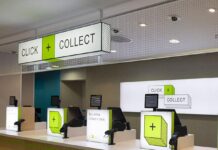Retention is a significant and worrying issue for retailers. According to recent reports, two-fifths of retail SMEs could go out of business this year because they can’t recruit store colleagues, while nearly all UK retailers have expressed concern over a shortage of new talent.
As consumers tighten their belts and the fight for customer mindshare and employee loyalty plays out, retailers must ensure they enhance customer services on the shop floor – whilst ensuring that their employees feel both engaged and empowered in their roles.
Retailers need to ‘flip the script’ on the perception of working in retail.
This will involve reimagining retail roles into advisors enabled by technology, speeding up the onboarding process when new employees join by simplifying training, easing the more demanding parts of the job through technology-enabled efficiencies, and providing tools for store teams to fully engage with customers, as well as surprising and delighting them.
🏆
The 2024 Creative Retail Awards are open for entries.
The Creative Retail Awards are much more than a mere accolade; they represent the pinnacle of achievement in the retail industry. Garnering a nomination or winning one of these awards is a testament to innovation, excellence, and leadership.
www.creativeretailawards.com
Achieving this is not rocket science – it simply requires smart use of technology that is disarmingly similar to what we all carry about 24 hours a day – our mobile devices!
Retailers need to think beyond the realms of what mobile technology can do for their customers and think about what it can do for their people and their processes.
However, it is imperative to remember that before investing in the latest mobile technology, retailers should ensure that they understand both the customer and employee user journey – and that isn’t always a straightforward process.
Many retailers rush to implement retail technology without first understanding how usable it is. A process that might seem perfectly logical to a Developer may not deliver the expected benefits to customers and store teams in real-life scenarios.
To achieve successful implementation, retailers must ensure that they involve store teams in the new technology journey and customer experience design, right from the get-go. Employees have a wealth of experience and a deep understanding of what works and what does not – retailers must avoid dropping new technology onto store teams and expecting instant (positive) results.
Addressing two sides of the coin
Customers expect a seamless shopping experience, with many blending their brick-and-mortar visit with eCommerce benefits offered by retailers, such as click-and-collect and ordering in-store to have items delivered at home.
If retailers can implement and use mobile technology in intelligent and innovative ways, they can empower their teams to work smarter, not harder, giving the retailer flexibility in how they deploy their internal talent.
Armed with a mobile device that lets them search out individual items for customers – store teams can suggest products, compare prices, highlight promotions and offer to order items that might be out of stock – helping them to become less ‘sales assistant’ and more ‘trusted advisor.
This mobile technology isn’t just limited to enhancing front-of-house experiences, it can also have transformative results for back-of-house employees by digitising laborious processes.
Yes, mobile technology can help store colleagues to get closer to the customer by removing barriers to the sales process, making it a much more seamless experience – but it can also reduce the time spent on onerous manual tasks when team members are off the shop floor, such as stock receiving and reducing stock anomalies.
Freed from the pressure of onerous chores, employees are happier more engaged and can spend more time with customers. Using mobile technology correctly increases revenue-making opportunities, enhances brand loyalty and increases satisfaction.
Retailers can also harness mobile technologies to support a host of employee-related factors, such as onboarding and internal communication, as well as celebrating success and fostering a consistent sense of company culture.
Ultimately, the smart use of mobile technology can help retailers address both sides of the coin, by improving the customer experience alongside transforming the store teams’ experience.
Reinvigorating the front-of-house and revolutionising the back office
Mobile technology supports in-store customer journeys and enhances All in a day’s work, experiences by empowering employees to sell more and build brand loyalty.
Through an intelligent investment in technology, retailers can harness mobile to enable their teams to quickly check stock items, verify whether customers are eligible for any discounts through loyalty schemes, or check stock and get them delivered to the customer’s nearest store for next-day collection.
Employees can also easily access inventory data on a mobile device, quickly checking the availability of an out-of-stock item and arranging shipment to the customer.
This approach also supports stock accuracy and loss prevention, as mobile point-of-sale technology automates inventory management. This helps to reduce manual errors and calculate stock correctly to avoid ambiguity, whilst reducing team friction.
Mobile technology also frees up back-office teams to not only be given additional training and learn new skills, but also to support customer-facing employees to process transactions, and become trusted advisors to customers, especially during peak trading times.
Another upside of employing capable mobile technology in-store is that retailers can differentiate their places of work, and valued teams members are less likely to be tempted away by rival stores and are more likely to be happy in their work.
Harnessing mobile technology in the right ways
Through the identification of both front-of-house and back-of-house use cases for mobile technology, a retailer can improve both customer and employee satisfaction at the same time.
At a time when it’s becoming harder to recruit – the focus of retailers must be on employee retention and development.
Happier, more fulfilled store teams don’t simply provide better customer service and enhance the ‘theatre of retail. They are less likely to be tempted to leave the industry – one of the key issues of modern retailing.
Plus, empowering store teams with access to the right data and digital tools can make their jobs easier and reduce stress – creating more time for them to spend on higher-impact tasks like looking after customers
At a time when investing in technology might seem like a risky strategy, it can be flipped as a business case to ensure business survival – increasing back-of-house efficiencies when teams’ resources are low – whilst increasing employee satisfaction and improving customer experiences as shoppers return in-store.
In a time of uncertainty and gloom – what better than having smiling faces in store?















